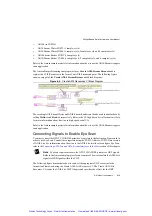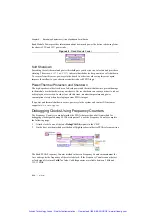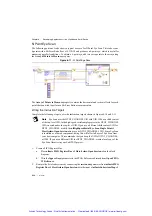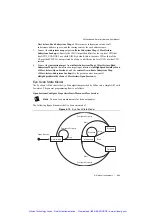
© National Instruments
|
8-29
NI High-Speed Serial Instruments User Manual
Host.lvclass:Read Subsystem Map.vi
. This retrieves information related to all
subsystems, address spaces, and the routing context for each address space.
3.
Connect the
subsystem map
output to
niInstr Subsystem Map v1 Host.lvclass:
Subsystem Lookup.vi
. Specify the UID (Unique Identifier) for the top-level UID that
has GTX2_CHANNEL as a child UID. By default, this is the same UID as that of the
NI-provided CLIP. If you registered Eye Scan to a different top-level UID, use that UID
instead.
4.
Connect the
instruction target
from
niInstr Subsystem Map v1 Host.lvclass:Read
Subsystem Map.vi
to the instruction target input terminal of
niHighSpeedSerialEyeScan
v1 Host.lvclass:Open Session.vi
, and the
context
from
niInstr Subsystem Map
v1 Host.lvclass:Subsystem Lookup.vi
to the parent context terminal of
niHighSpeedSerialEyeScan v1 Host.lvclass:Open Session.vi
.
Eye Scan State Model
The Eye Scan API abstracts the Eye Scan algorithm provided by Xilinx into a simple API with
few states. The general programming flow is as follows:
Open Session»Configure Properties»Start»Measure»Close Session.
Note
You can loop measurements for frequent updates.
The following figure illustrates the Eye Scan state model.
Figure 8-12.
Eye Scan State Model
Config
u
re Property
S
topped
S
t
a
rt
Uniniti
a
lized
Open
S
e
ss
ion
S
t
a
rt
S
top
Done
Me
asu
re
S
t
a
rt
Config
u
re Property
Config
u
re Property
Me
asu
ring
Fini
s
hed
Artisan Technology Group - Quality Instrumentation ... Guaranteed | (888) 88-SOURCE | www.artisantg.com























